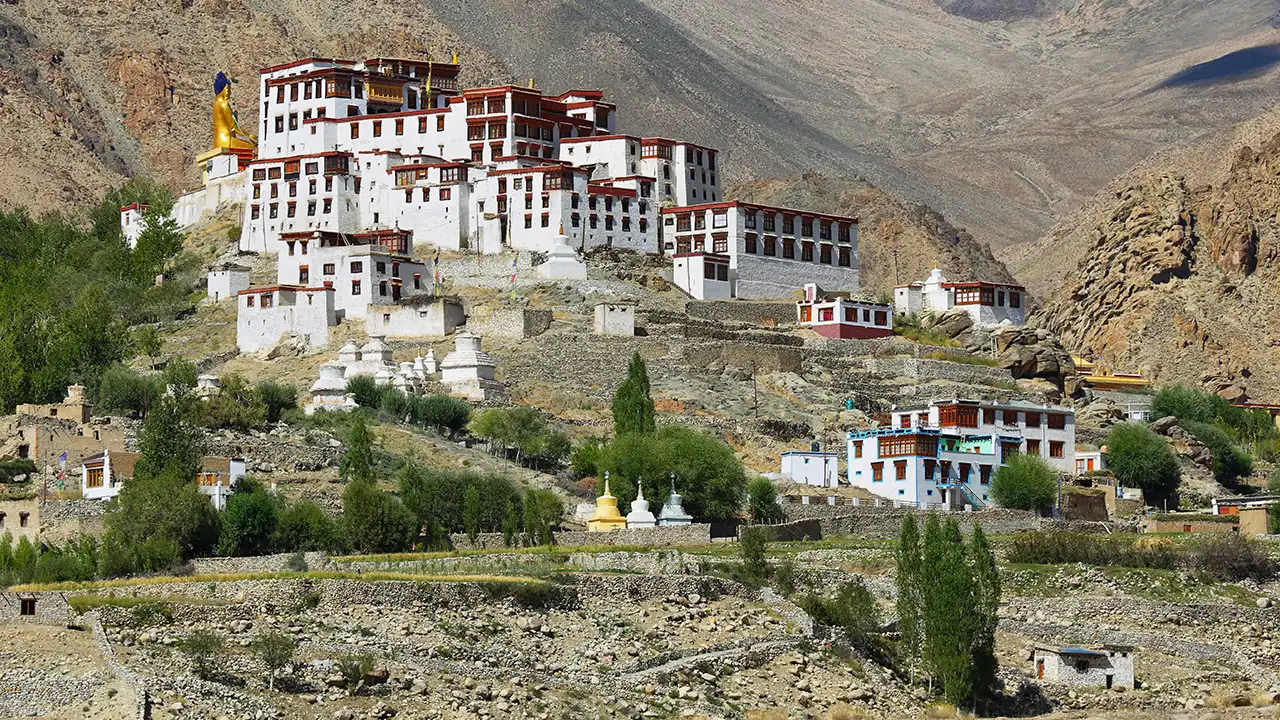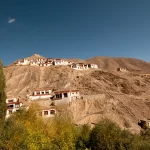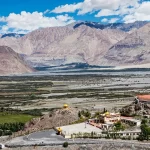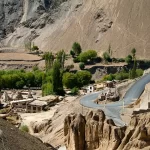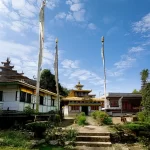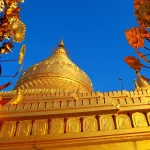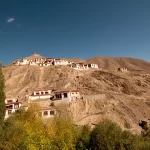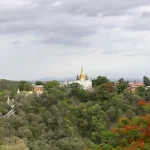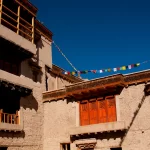These monasteries are neither temples nor churches; if anything, they are citadels of peace, histories, and Himalayan cultures. Such sacred places are set in some of the most picturesque locales across the country-they offer much more than ordinary sightseeing to a traveler.
Peace, Prayer, and Serenity
Every monastery has a doorway leading to an entrance that is filled with everything sacred. The chanting of monks, the subtle perfume of incense, and the gentle twirls of prayer wheels create a strongly peaceful atmosphere for lone contemplation and meditation. It is here that visitors seem to create a truly deep emotional connection with the areas that appear most still, calm, and spiritual.
Vibrant Living Heritage
Such age-old traditions, shrines, sacred scriptures, and ancient murals are kept well alive by these monasteries-Tawang, Thiksey, Rumtek, and Hemis. The rich tapestry of masked dances, music, and spiritual performances during Hemis Tsechu or Losar enliven these places. They do not only form religious rites, but also insights into local lifestyles and cultures.
Stunning Natural Locations
Most monasteries are constructed in these stunning high-altitude locations! Interestingly, one such breathtakingly beautiful place could be the moon-like landscape of Lamayuru or the forests above Enchey or the cliff-side view of Phugtal-these places are wonderstruck. Photography, nature walks, prayer at dawn further add to the icing of the cake on a memorable visit.
How to Reach
Tourists can approach monasteries from nearby towns such as Leh (Ladakh), Gangtok (Sikkim), Tawang (Arunachal Pradesh), and Dehradun (Uttarakhand). Some monasteries are very easy to reach by road, while others like Phugtal require a trek. Dress yourself modestly and observe silence and respect the local custom in prayer areas.
Travel Tip-Safety Issues
• Modest attire, remove shoes in prayer halls
• Avoid loud conversations and ask first before taking any pictures
• Acclimatization procedure for high-altitude monasteries must be undertaken
• Bottled water, warm clothing, and local guides before venturing into remote areas
Here are a few among many reasons why these 15 monasteries have found their places as highly reputed sites for meditation, learning, and unique cultural happenings.
15 Monasteries in India – Features, Experience & Safety Tips
1. Rumtek Monastery (Sikkim)
Experience: Visitors sense deep peace walking through vibrant prayer halls, observing monks in meditation.
Safe travel advice: roads can be steep-so wear good shoes. Warm clothes even in summer. Heavy rains are a bad time to go.
2. Tawang Monastery (Arunachal Pradesh)
Experience: Surreal spirituality with the vast monastery complex and mountain sights. Ideal for cultural enculturation.
Safety tips: This height (10,000 ft) might cause mild altitude sickness. Acclimatize properly and also carry requisite medication.
3. Thiksey Monastery (Ladakh)
Experience: Morning prayers at sunrise with chants echoing through the valley are the best way to start the day.
Safety tip: Thin air in Ladakh can affect breathing- stay hydrated and avoid sudden exertion. Use sunscreen.
4. Ghoom Monastery (West Bengal)
Experience: Peace in a stop near Darjeeling: An excellent place for reflection while having Tibetan artifacts around.
Safety tips: Mind it when driving-in foggy conditions. Keep belongings safe in crowded areas.
5. Mindrolling Monastery (Uttarakhand)
Experience: Visitors admire the high stupa, enormous statues, and quiet ambience of the gardens.
Safety tips: Summer sun is harsh. Carry water and a hat. Make silent phones in prayer zones.
6. Hemis Monastery (Ladakh)
Experience: The experience of visiting during the Hemis Festival is a lifetime experience of color, chanting, and sacred dance.
Safety advice: Traverse slowly on mountain roads. Altitude effects at the monastery-some customization pays.
7. Namdroling Monastery (Karnataka)
Experience: Peaceful walks and beautiful photography come together here. The murals and golden statues are attractive.
Safety tips: Maintain silence in the monastery. Weekends can be crowded so visit during weekdays to experience peace.
8. Tabo Monastery (Himachal Pradesh)
Experience: Very much the ancient character would be remarked here with all its old mud walls and the truly untouched spiritual charm.
Safety tips: Weather very fast changes into layers in Spiti. The roads can be moody, so organizing in advance becomes important.
9. Alchi Monastery (Ladakh)
Experience: Good for religious art lovers. Its ancient frescoes reveal vestiges of 11th-century Tibetan Buddhism.
Safety tips: Do not touch the wall paintings. Paths may be uneven; wear sturdy shoes.
10. Lamayuru Monastery (Ladakh)
Experience: Surrounded by “Moonland” terrain. This place would bring in an aura of mystique and a silence where one can meditate.
Safety tips: Roads are narrow-travel with experienced drivers. Avoid hiking during late evening.
11. Diskit Monastery (Nubra Valley)
Experience: The enormous Maitreya Buddha statue overlooking the valley is impressive.
Safety tips: Roads in winter may be slippery. Stay on marked paths in the vicinity of steep drops.
12. Phugtal Monastery (Zanskar, Ladakh)
Experience: Trekking to this cliff-cave monastery is spiritually rewarding and serenely tranquil.
Safety tips: The trek is remote-go with a guide. Carry basic first aid and water.
13. Enchey Monastery (Sikkim)
Experience: A forested backdrop, with chants and rituals close to Gangtok.
Safety tips: Walk carefully across mossy paths. Signs during ceremonies should be respected.
14. Shashur Monastery (Lahaul, Himachal Pradesh)
Experience: Quiet, quirky retreat of colorful murals and views of hills cloaked in pine trees.
Safety tips: Rough mountain paths might lead to this point; 4×4 vehicles are recommended. Carry warm gear.
15.Sakya Monastery (Dehradun, Uttarakhand)
Experience: Wide open prayer spaces and an educational experience for anyone interested in Tibetan Buddhism.
Safety Tips: Stay hydrated and avoid loud conversation during prayer times. Watch children near the stupa area.

